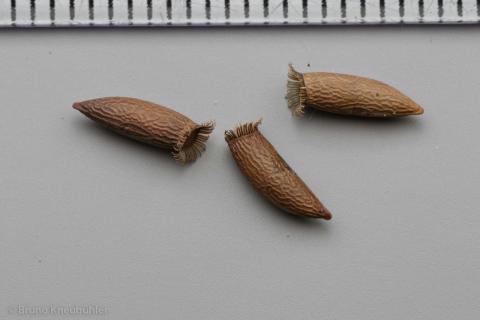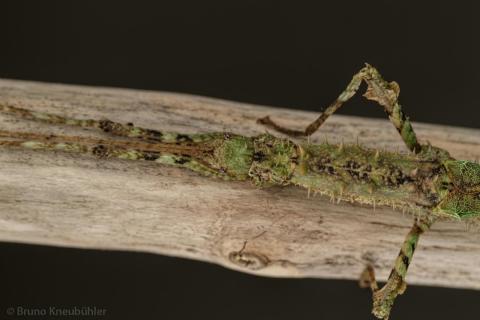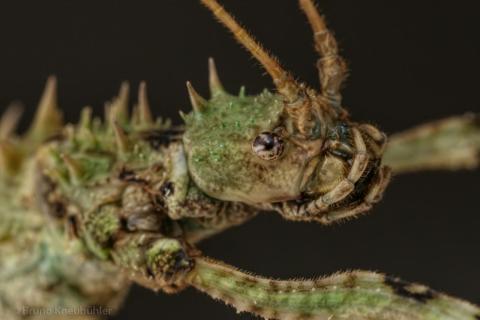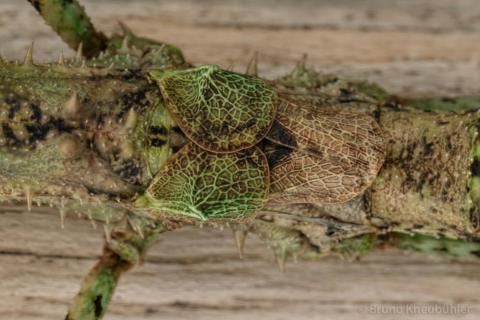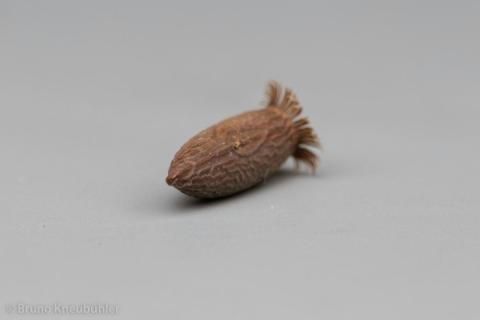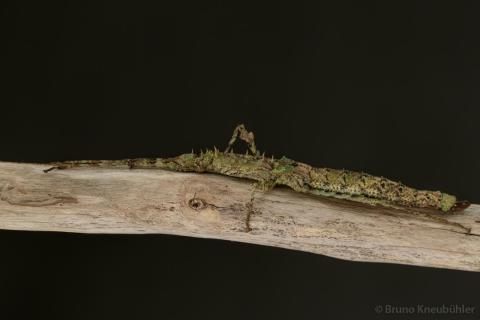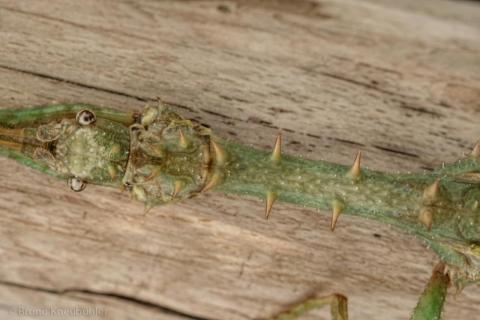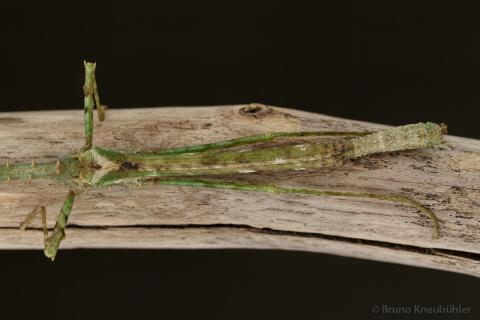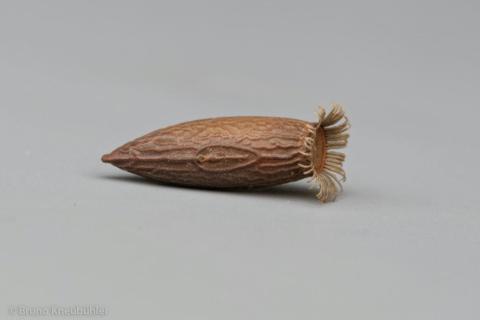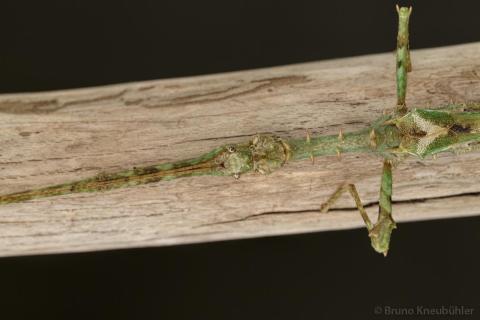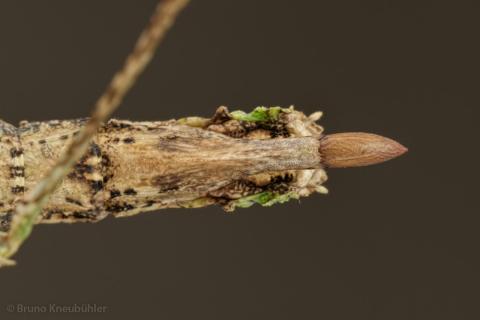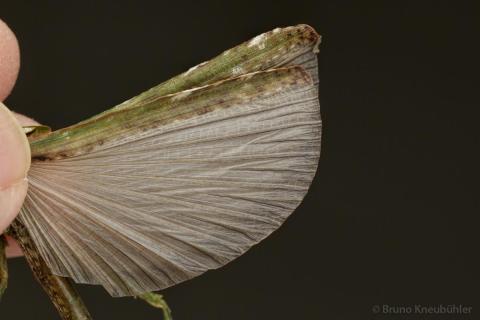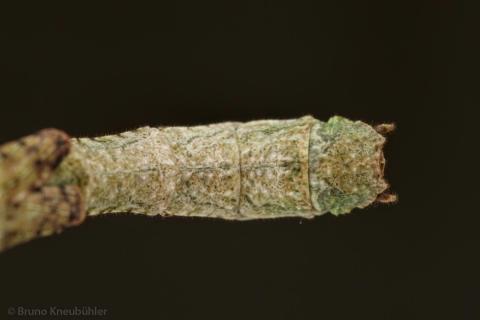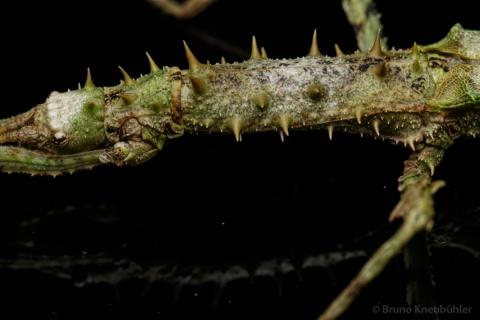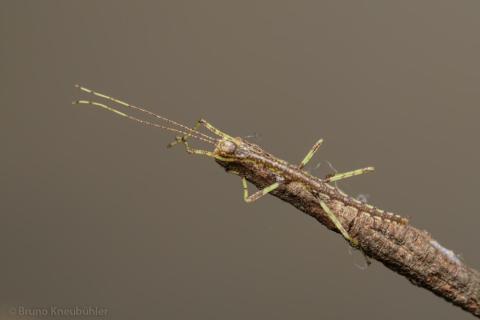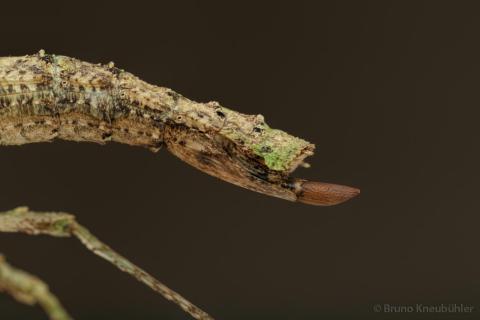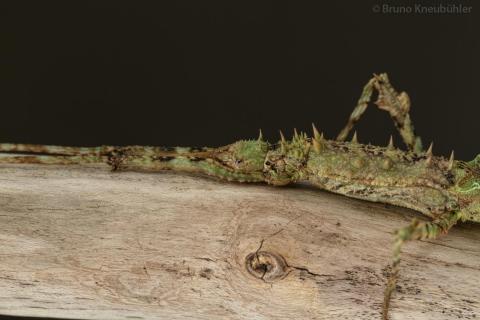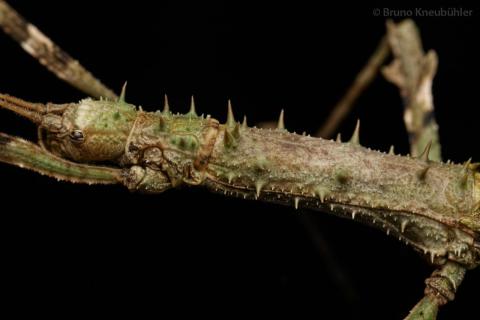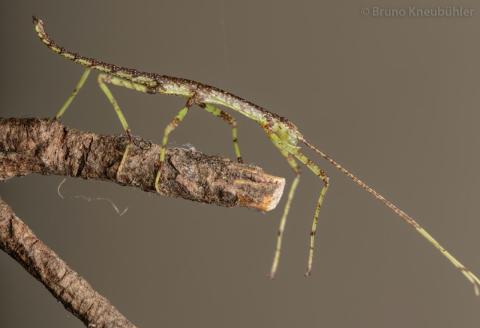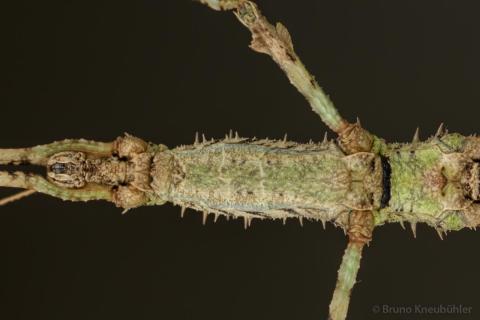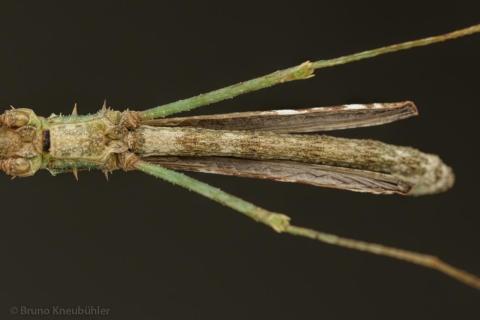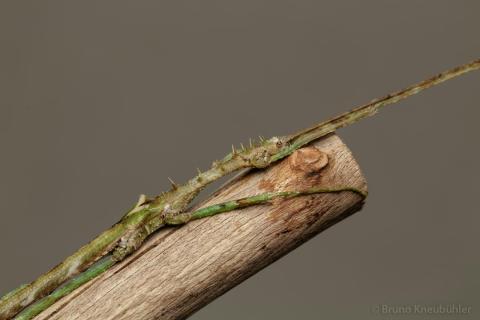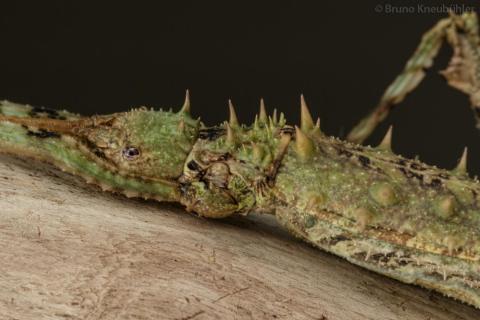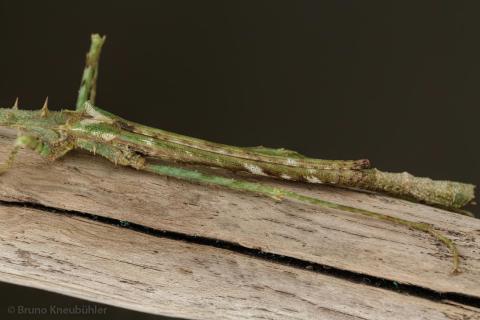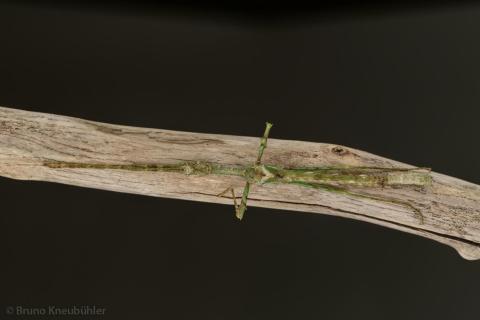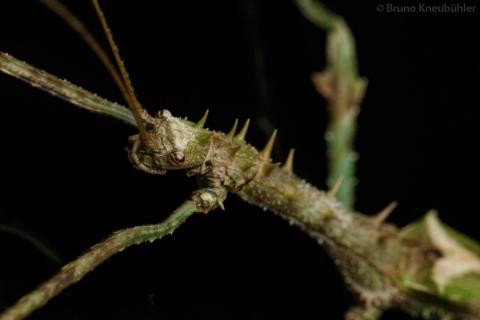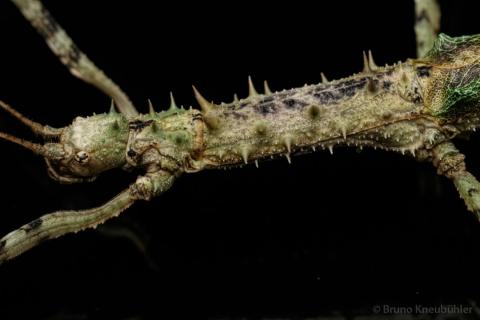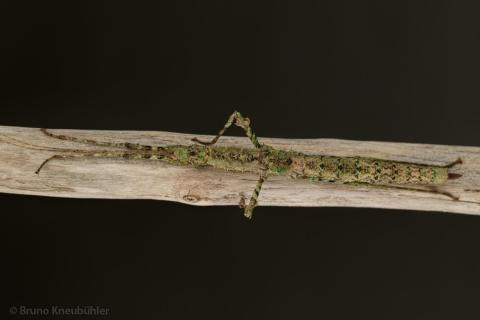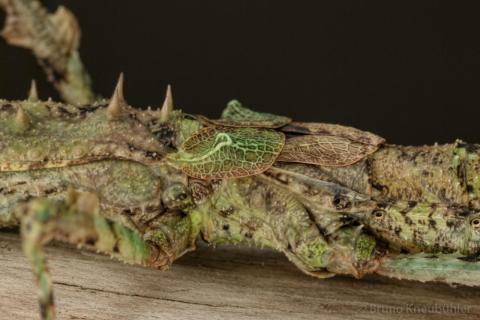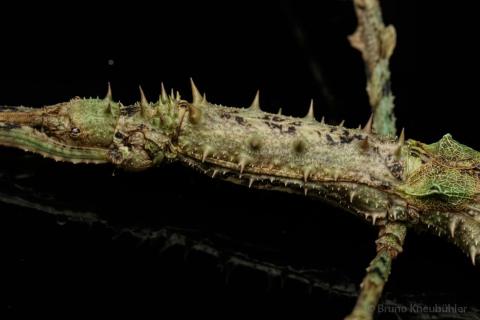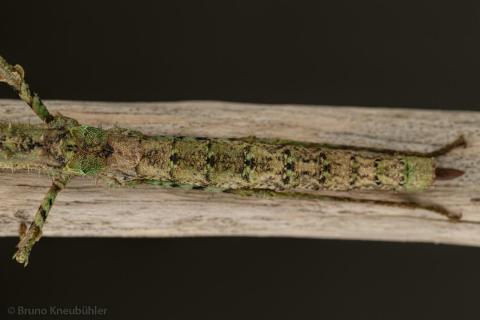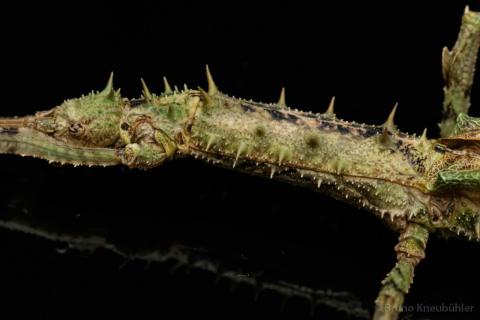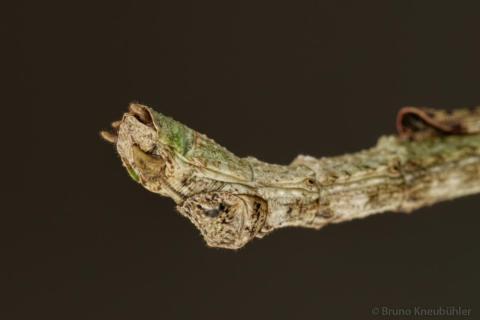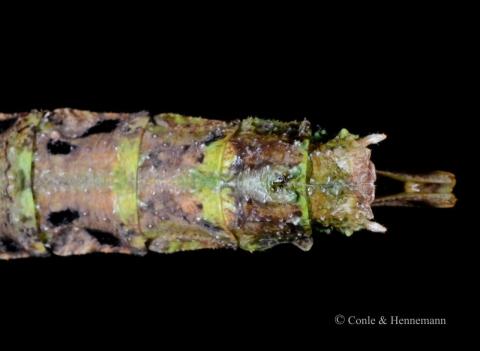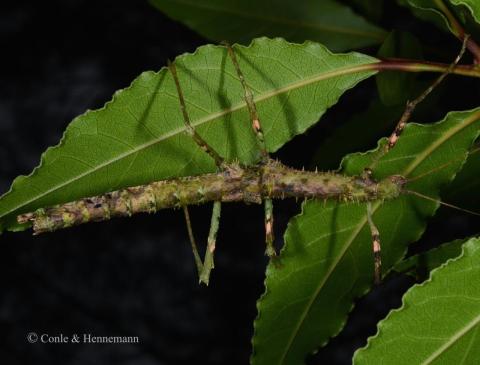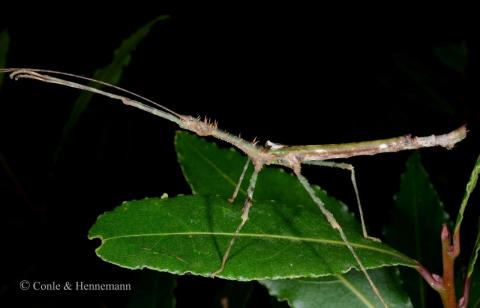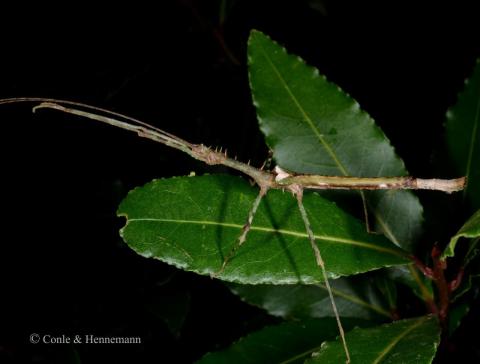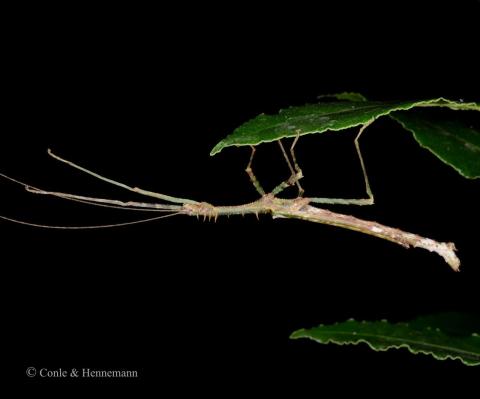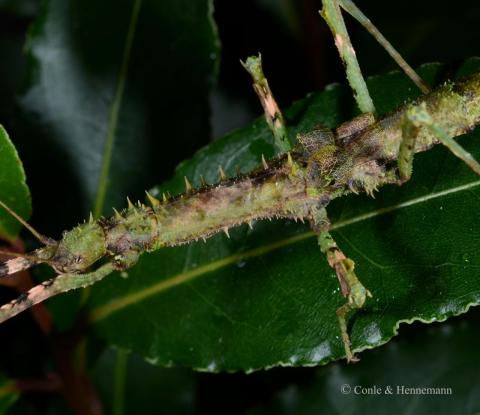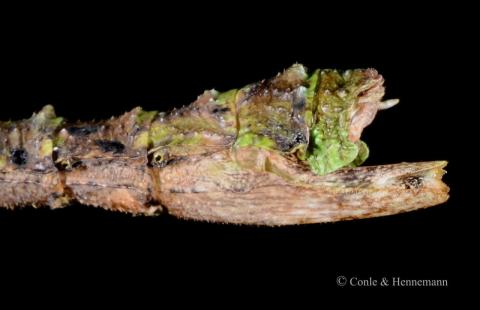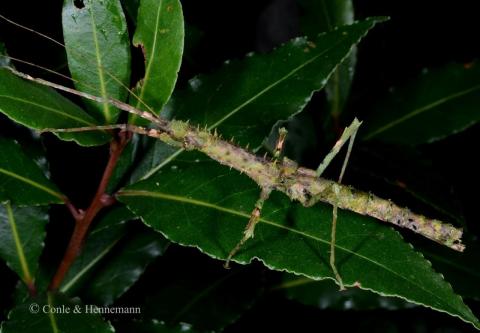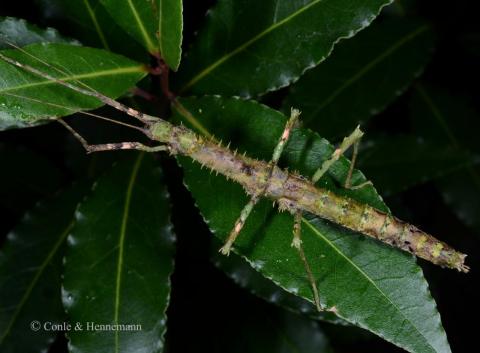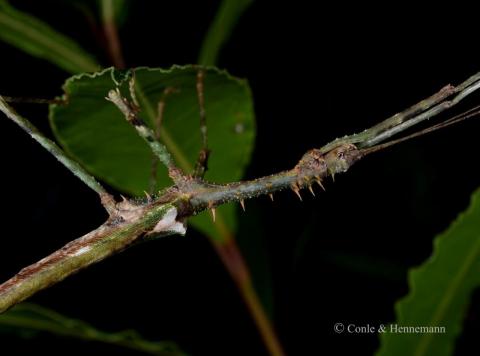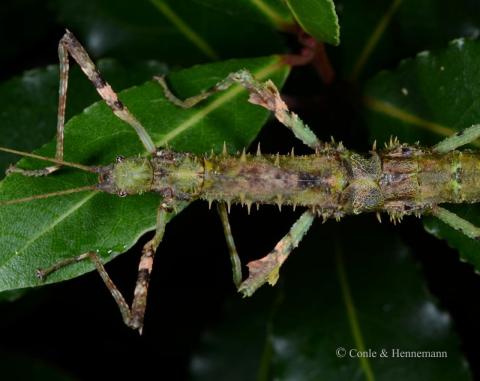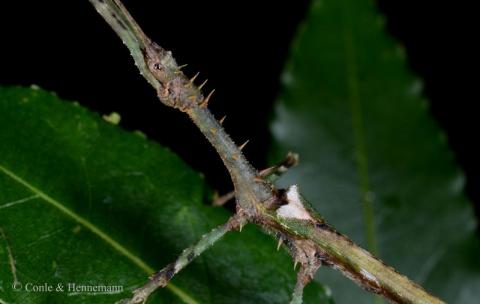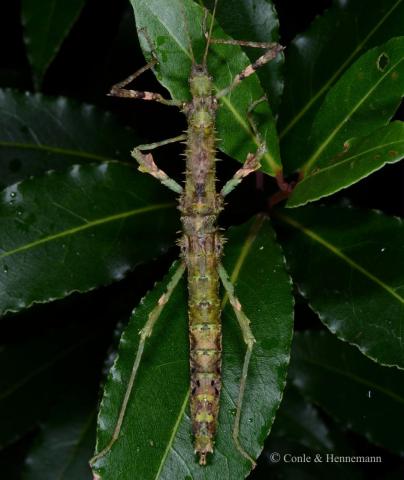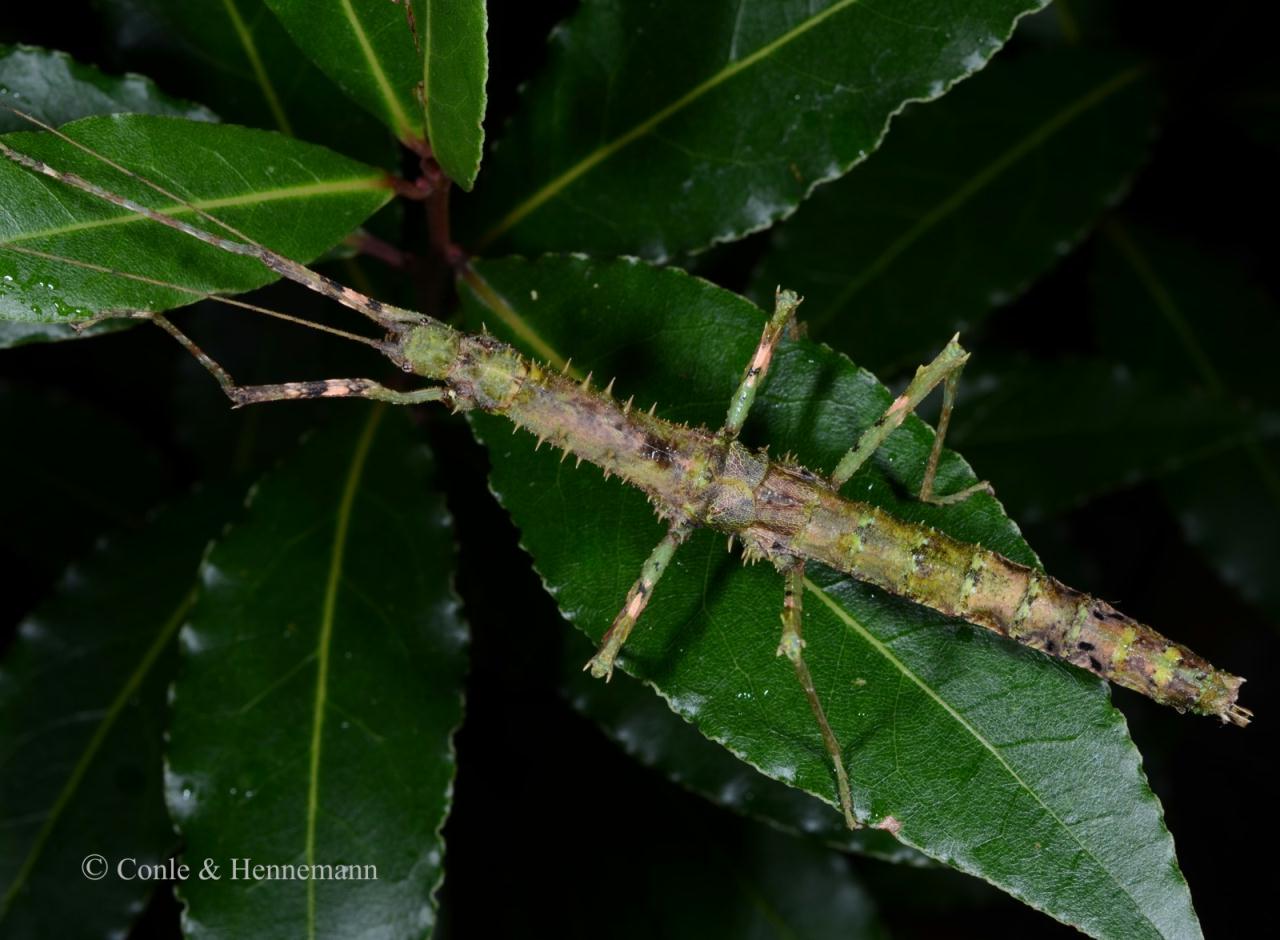
Genus
Species
Stock
CLP
736
PSG
146a
Culture status
In culture
Foodplants
Bramble (Rubus spp.)
Breeding notes
Centrophasma hadrillum spinocephalum "Bako"
(by Bruno Kneubuehler)
General Informations
- this culture has been distributed as Centrophasma hadrillum "Bako" at first
- provenience: Bako NP (Sarawak, Borneo, Malaysia)
- F1 CB culture by JungChun Chiang (Taiwan)
- F1 CB culture in Europe by Bruno Kneubuehler (2015)
- further taxonomical informations ➤ phasmida.speciesfile.org
- this is a pure culture, and serious breeders are asked to avoid mixing this culture with similar populations from a different provenience
Females
- very sturdy and very spiny
- body length 9 cm
- females are very variably colored, in different shades of brown and green
- short hindwings
Males
- stury and spiny
- body length 8 cm
- fully developed wings
Nymphs
- freshly hatched nymphs brown with green legs
- about 20 mm
- on how to distinguish between male and female nymphs
Eggs
- 7 x 2.5 mm
- brown
Food Plants
- bramble (Rubus spp.)
well accepted by nymphs and adults
Breeding, Behaviour
- active mainly during the night
- they feign death when touched
- eggs are stuck into a suitable substrate
- dry sand is accepted as an egg-laying substrate
- about 5 - 7 eggs per female and week
- incubation (HH-method on slightly damp vermiculite) about 4 - 5 months at 20 - 23 °C
- males will be adult after 4 months (at 20 - 24°C), females after 5 months
- a humidity of about 75 - 80 % seems to be good enough for this species
- especially adults should be kept more humid
- one can spray them regularly with chlorine-free water, but allow the water to dry up before spraying again
- easy to breed
Basics of phasmids breeding
- keep only one species per cage, overpopulation is one of the main reasons for breeding failures
- keep nymphs seperate from the adults, mainly to protect them during the crucial moulting phases
- choose the cage big enough, when in doubt it is (usually) better to choose a cage too big than too small
- a ventilator often supports good breeding results, as it seems to increase activity and feeding
- provide enough light, but avoid direct sunlight (overheating)
- try to keep day time temperatures below 25°C
- a nocturnal fall of temperature is natural, and thus advantageous
- do not spray too much, phasmids are no fish ! The water should dry up before you spray again
- minimize disturbances (loud music, commotions, light at or during the night, opening up cages in the morning [often a moulting phase] ect.)
Useful informations
➤detailed infos on how to breed phasmids
www.phasmatodea.com/web/guest/199
➤
infos on newly cultured phasmid species
https://www.facebook.com/phasmatodea
➤
Online Culture List
www.ulft-ict.nl/phasma/kweeklijst/
➤
PSG list
www.phasmatodea.com/web/guest/psg
➤
how to recognize the difference between male / female nymphs
www.phasmatodea.com/web/guest/tips-and-tricks
➤
eggs for breeding
http://www.phasmatodea.com/web/guest/222
